I finally made it to the PAV – Parco Arte Vivente (park of living art) in Turin and visited Vegetation as a Political Agent. The exhibition charts a history of the plant world, by looking beyond the biological and exploring the political and social implications of vegetation. And it is pretty much as exciting as i had hoped.
Plants are not as neutral and powerless as we might think. For example, they played a particularly important role in the 17th and 18th centuries, when navigators and ‘explorers’ sent to discover the world ended up annexing the land, colonizing populations and looking for ways to exploit the financial potential of new plant species (culminating in the spice trade.)
At the other end of the spectrum are individuals and communities which, from the 1970s on, have been using plants to resist, revolt and defy. The exhibition tells their story through documents that date back to the first ecological revolutions, specially commissioned projects and contemporary artworks.
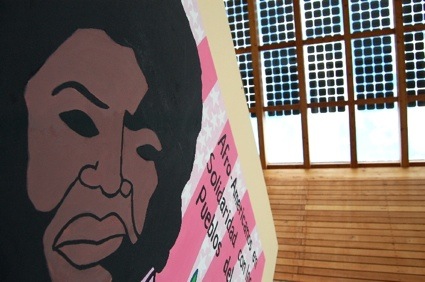
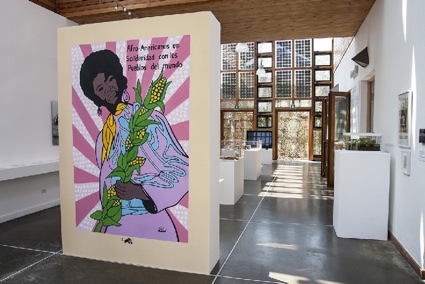 Emory Douglas, Zapantera Negra. Wall painting, variable dimensions. Courtesy the artist, painted by Pietro Perotti. Photo PAV
Emory Douglas, Zapantera Negra. Wall painting, variable dimensions. Courtesy the artist, painted by Pietro Perotti. Photo PAV
The show opens with the mural Zapantera Negra in which Emory Douglas (Minister of Culture for the Black Panther Party from 1967 until the 1980s when the group disbanded) brings together the Black Panther movement and the Escuelita Zapatista supporting the rural working-classes in Chiapas. Douglas modified one of his famous posters Afro-American solidarity with the oppressed people of the world (1969) by turning a rifle into a corn plant, symbol of Mexican populations.
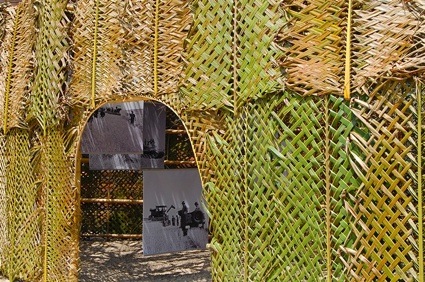
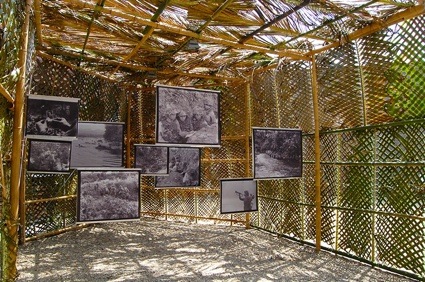 RozO (Philippe Zourgane and Severine Roussel), When vegetation is not decoration, 2014. Photo PAV
RozO (Philippe Zourgane and Severine Roussel), When vegetation is not decoration, 2014. Photo PAV
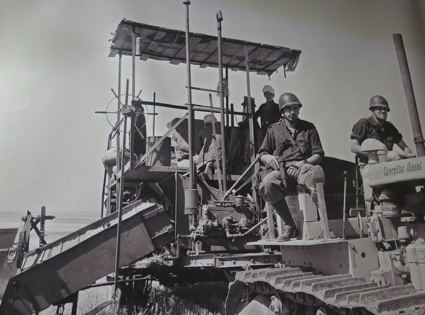
By placing plants in the context of territorial control in colonial and postcolonial periods, RozO‘s When vegetation is not decoration is perhaps the work that best encapsulates the exhbition. On a larger-scale, vegetation can become a tool to manage a territory or, conversely to support resistance against foreign control. The installation, made of archive material housed inside a temporary architecture of bamboo and palm leaves, illustrates contrasting uses of vegetation in history:
First, black and white photos taken by the French army in the mid-1950s show the French army harvesting wheat in Algeria. They are protected by elite soldiers and armored units.
These images clearly depict the exploitation of land for the benefit of the coloniser. Aside from the word “Algeria” written on the grain sacks, it seems that we are witnessing a French cereal farming region. Here vegetation is clearly used to assimilate and acculturate. Vegetation is employed by the attacker and coloniser of a country or region, to deterritorialize its inhabitants. Rendering the natives foreigners in their own land was a technique that frequently used by colonisers. In the 20th Century, following the invasion of Poland, Nazi Germany implemented a wide-reaching process of “Germanisation” of the territory, to render it German.
On the other side are stills from Chien thang Tay Bac (North West Victory), a documentary filmed in 1952 by the Viet Minh military forces during the war against French occupation. The images demonstrate how Vietnam fighters used topography and vegetation as a weapon. Instead of traveling through the road infrastructure, the soldiers used pathways that allow them to avoid detection by the French occupiers and instead of using the traditional bamboo rafts to cross rivers, they built bamboo bridges that were almost impossible to detect as they were positioned 10 centimetres under the surface of the water.
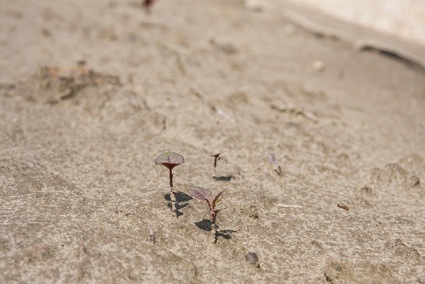
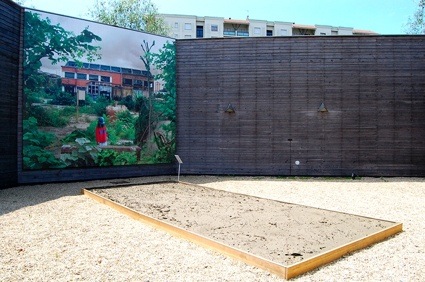 Critical Art Ensemble, Sterile Field, 2014. Photo PAV
Critical Art Ensemble, Sterile Field, 2014. Photo PAV
Roundup Ready Crops are genetically engineered crops that have had their DNA altered to allow them to withstand the active ingredient of Monsanto’s herbicide Roundup. Farmers who plant these seeds must use Roundup to keep other weeds from growing in their fields.
Members of Critical Art Ensemble prepared an artificial plot of land with RR herbicide, and challenged people to try and grow something in the enriched soil. The result of their efforts is depressing, it illustrates better than any essay the reason why the herbicide’s nickname is ‘killer exterminator’.
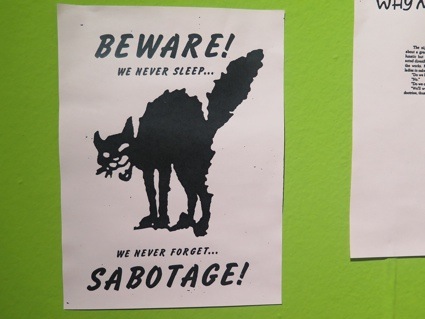
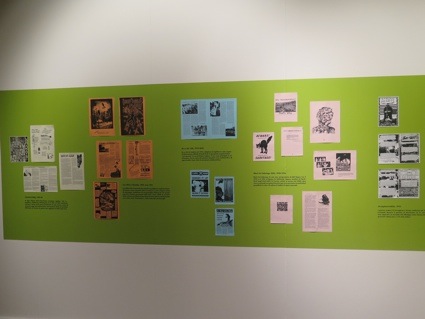 Adelita Husni-Bey, Part of chronicle of zines about the English radical environmental movement (details)
Adelita Husni-Bey, Part of chronicle of zines about the English radical environmental movement (details)
The most fascinating work in the show for me was Adelita Husni-Bey’s timeline of English ‘green’ movements between 1987 and 2004 as seen through the radical and underground zines they published. Before the widespread use of the internet, zines and magazines were the only way to spread counter-information, controversial ideas and research.
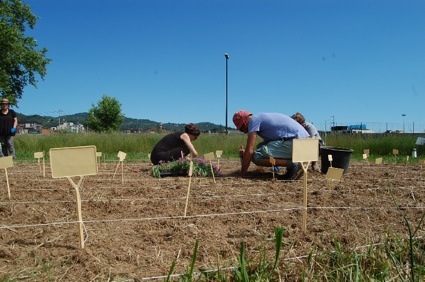
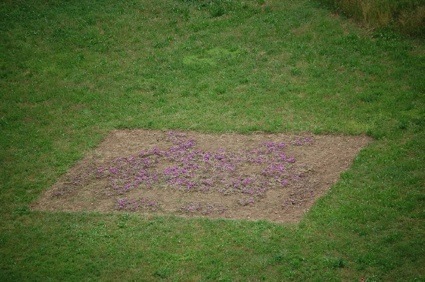 Dan Halter, Mesembryanthemum Space Invader, 2014. Delosperma cooperi. Photo PAV
Dan Halter, Mesembryanthemum Space Invader, 2014. Delosperma cooperi. Photo PAV
Dan Halter planted a colony of Mesembryanthemum, a flower originally from southern Africa which is considered an alien species in many other parts of the world. Once in full bloom, the plant forms the famous icon of the Space Invaders video game, suggesting thus a very literal take on the idea of invasion. Excepts that this time, the colonization is upside down: it’s African invaders that are about to colonize Europe.
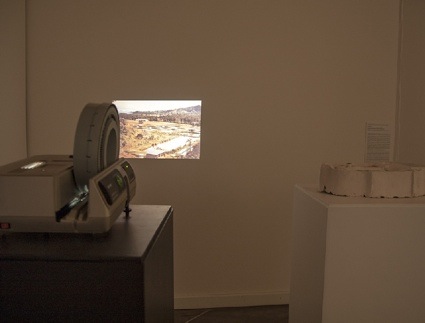 Fernando García-Dory, Dream Farms The Lost Path: Learning from George Chan’s Legacy, 2009-2014. Photo PAV
Fernando García-Dory, Dream Farms The Lost Path: Learning from George Chan’s Legacy, 2009-2014. Photo PAV
Fernando Garcia-Dory brings to our attention George Chan’s models of Integrated Farming and Waste Management System. The IFWMS involves a closed sustainable cycle in which matter and energy flow within the productive unit, increasing yields to meet the demands in food and energy of local populations while at the same time guaranteeing the sustainability of the ecosystem.
This revolutionary model, called Dream Farms, is as yet largely unknown.
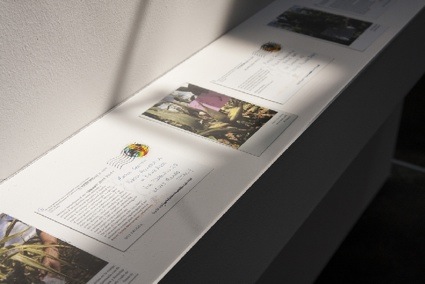 Claire Pentecost, Greetings from the Cornbelt, 2012. Series of five postcards, poster, archival envelope Courtesy the artist. Photo PAV
Claire Pentecost, Greetings from the Cornbelt, 2012. Series of five postcards, poster, archival envelope Courtesy the artist. Photo PAV
Claire Pentecost‘s series of postcards document the artist’s research in Mexico where she discovered that transgenic maize is illegally cultivated. Working with grassroots organizations in Sierra Juarez di Oaxaca, she catalogs the OGM plants and portrays them on postcards that are then distributed to Mexican farmers in the hope that they will help stop the contamination.
More images from the exhibition:
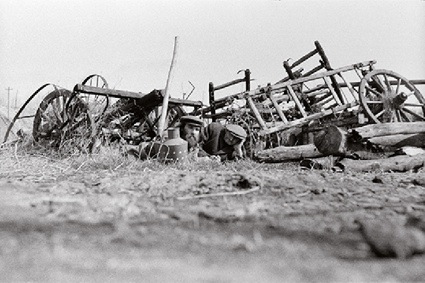 Imre Bukta, In The Cemetary Of Farm Wagons, 1976. Photo PAV
Imre Bukta, In The Cemetary Of Farm Wagons, 1976. Photo PAV
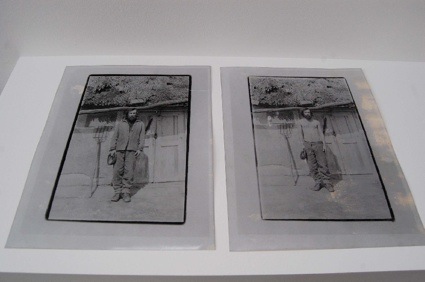 Imre Bukta. Photo PAV
Imre Bukta. Photo PAV
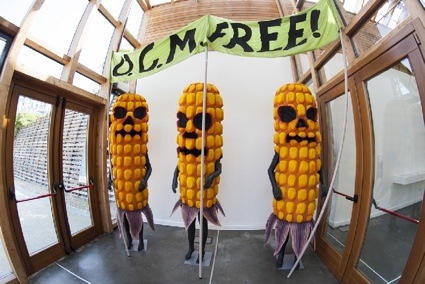
 Piero Gilardi, O.G.M. Free [G.M.O. Free], 2014. Costumes for political animation, painted expanded polyurethane, cloth and mannequins. Photo PAV
Piero Gilardi, O.G.M. Free [G.M.O. Free], 2014. Costumes for political animation, painted expanded polyurethane, cloth and mannequins. Photo PAV
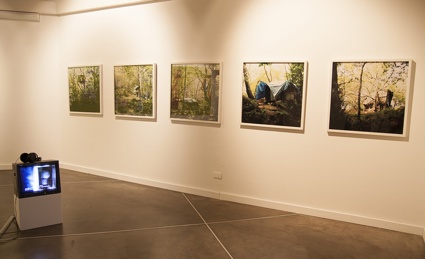 Adelita Husni-Bey, Story of the Heavens and Our Planet, Archetype I, 2008-2009 (installation view.) Photo PAV
Adelita Husni-Bey, Story of the Heavens and Our Planet, Archetype I, 2008-2009 (installation view.) Photo PAV
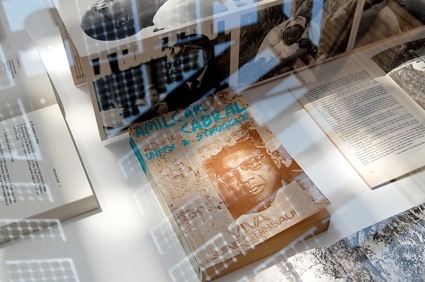 Amilcar Cabral. Photo PAV
Amilcar Cabral. Photo PAV
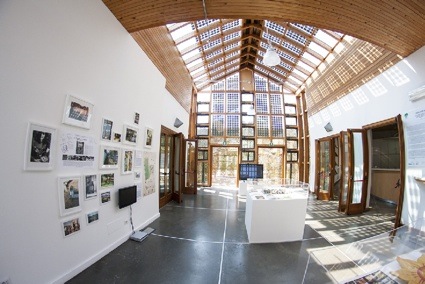 View of one of the exhibition rooms. Photo PAV
View of one of the exhibition rooms. Photo PAV
Vegetation as a Political Agent was curated by Marco Scotini. It is on view at the PAV – Parco Arte Vivente in Turin until 11 January 2014.
